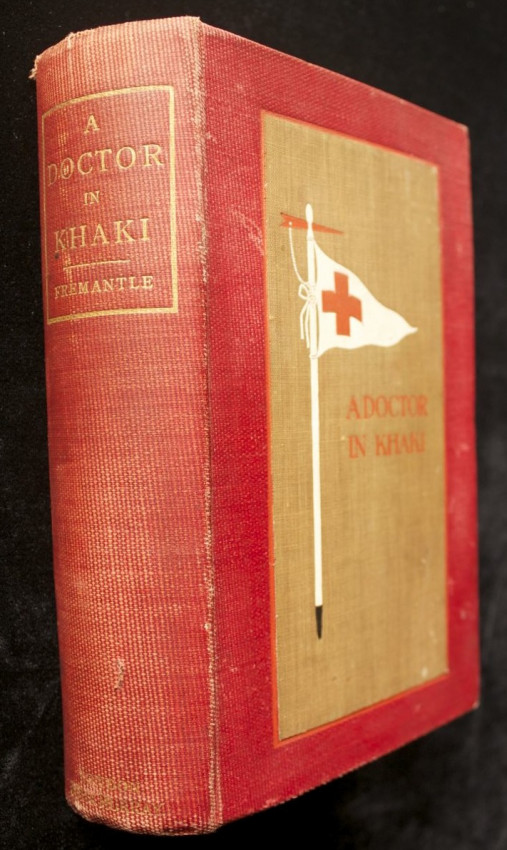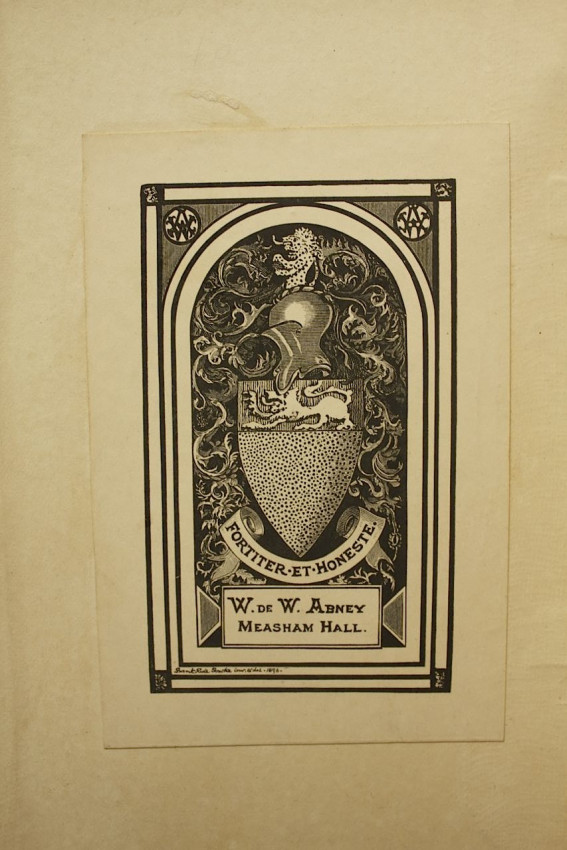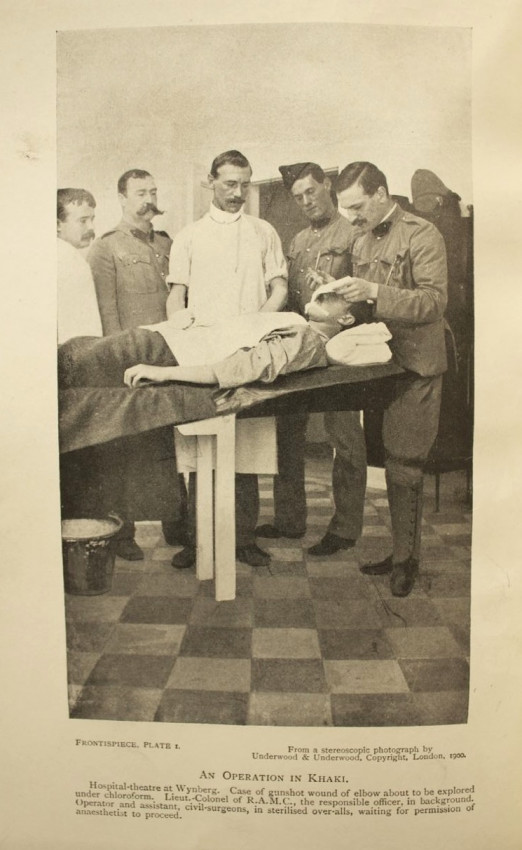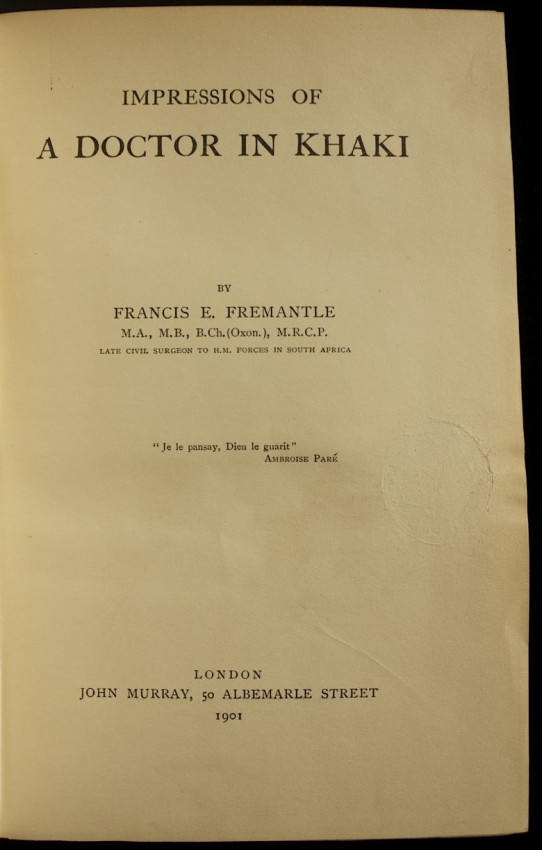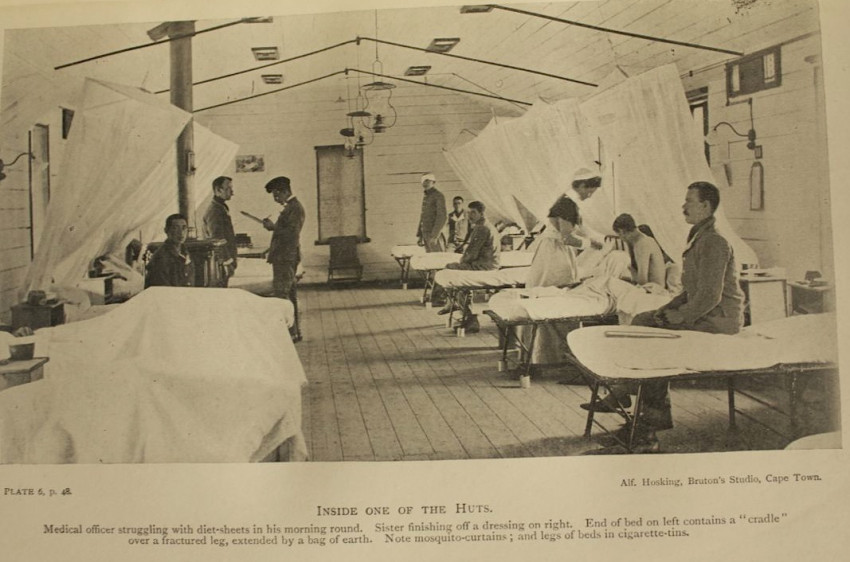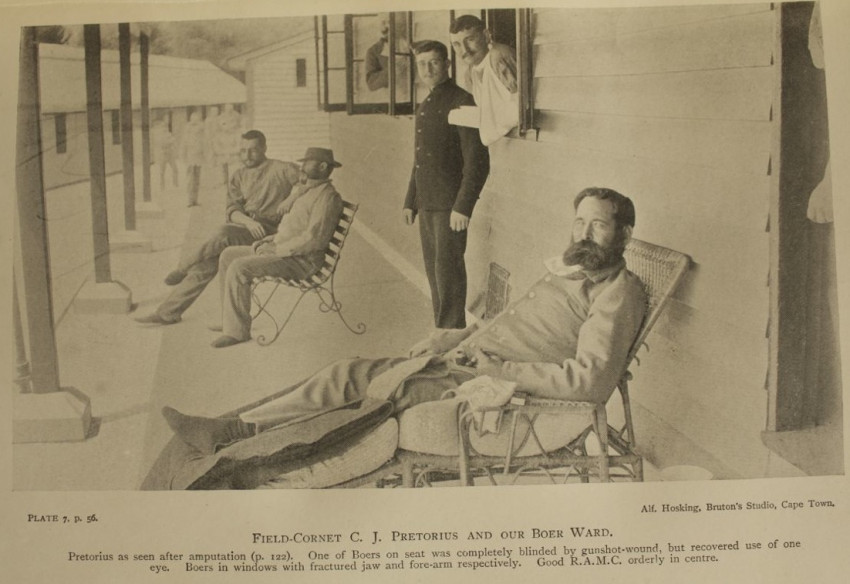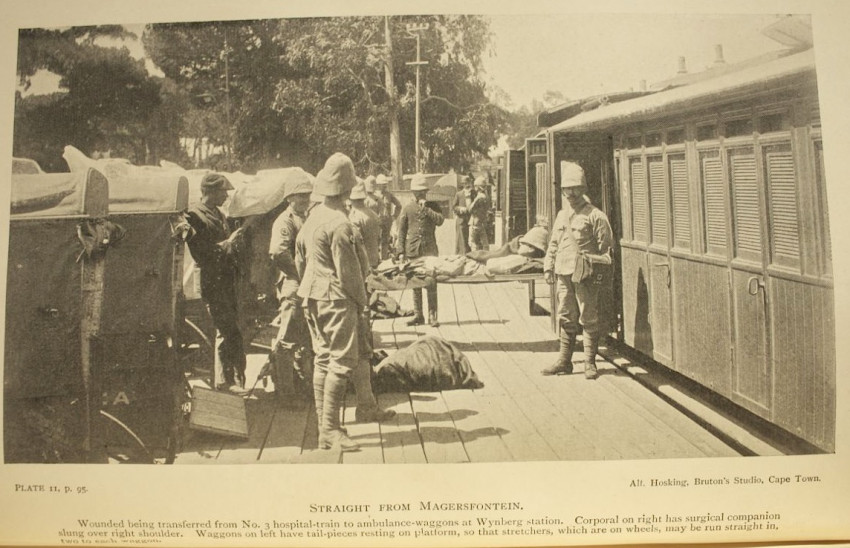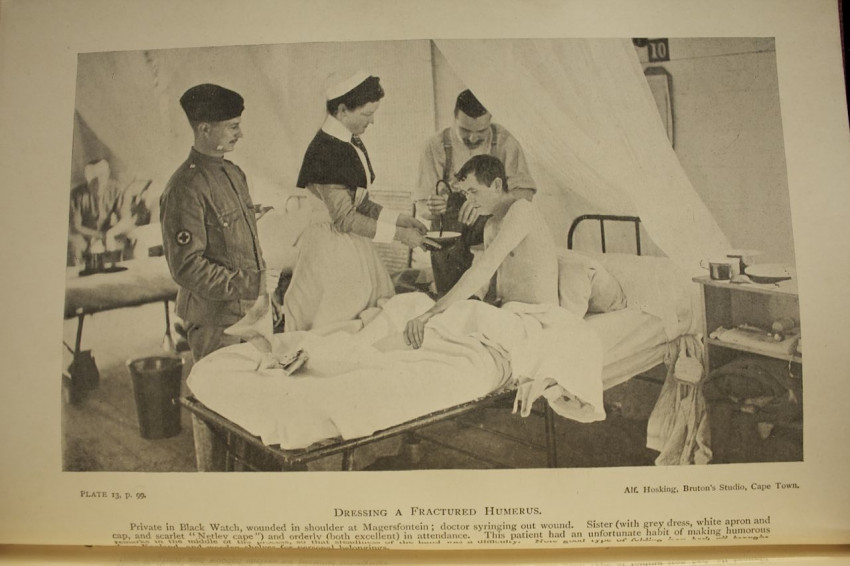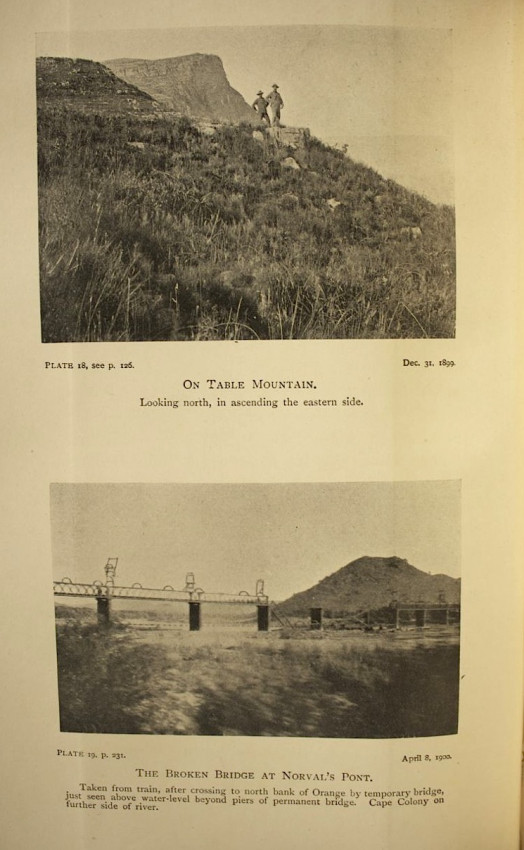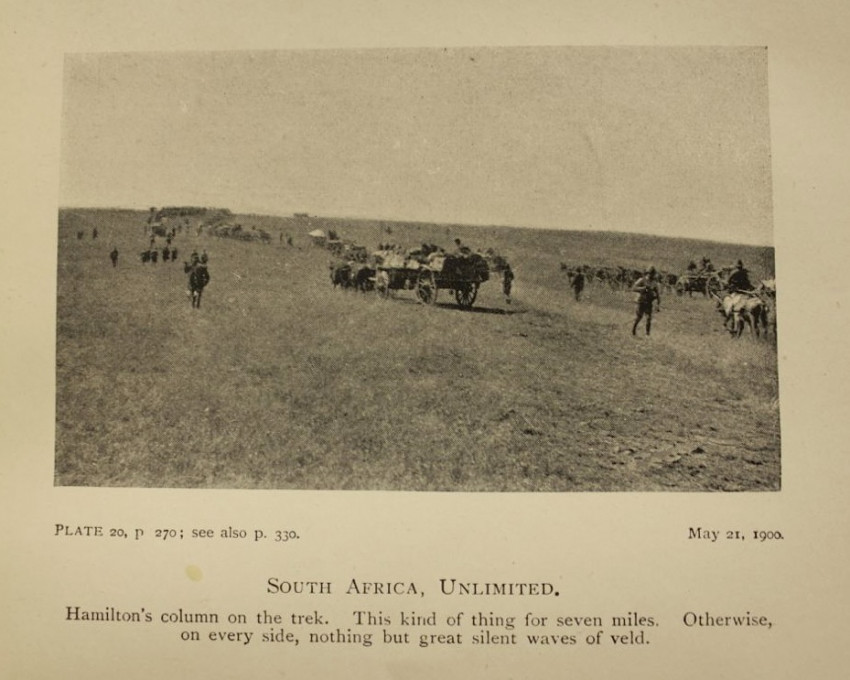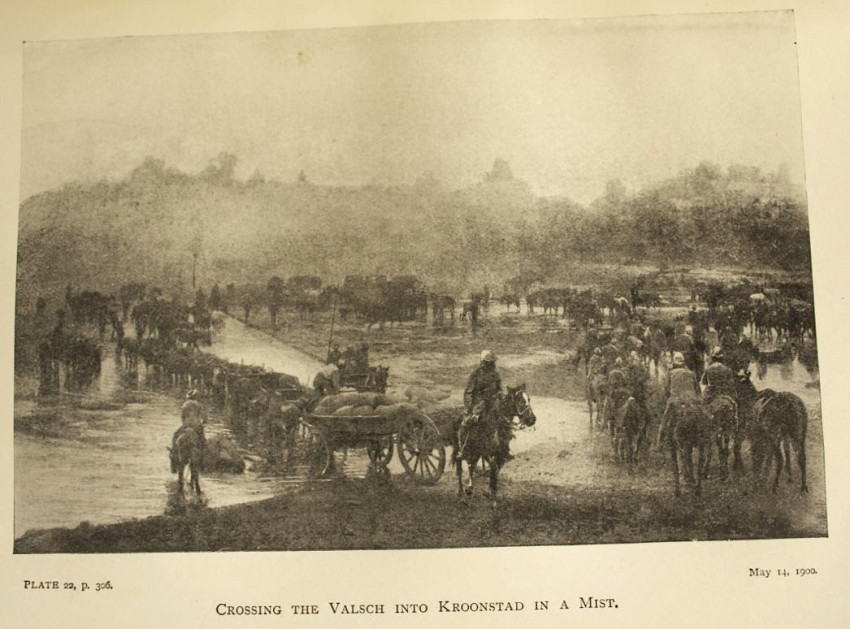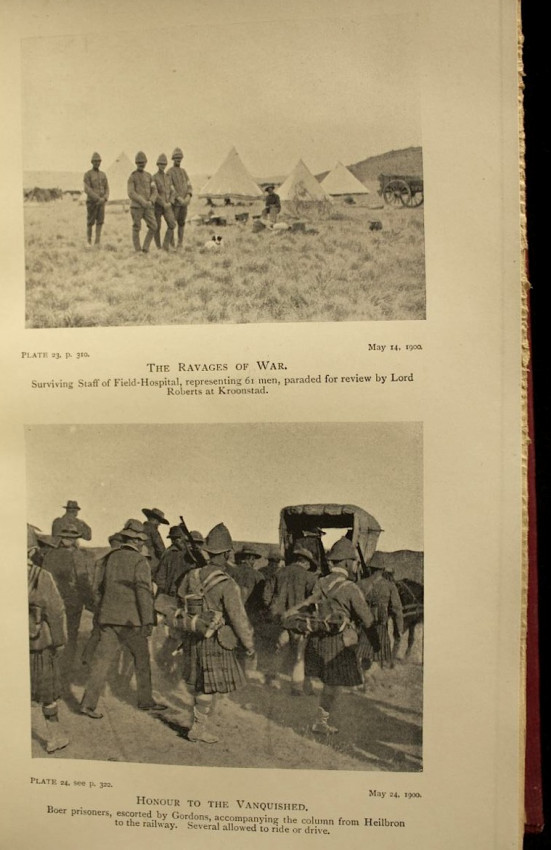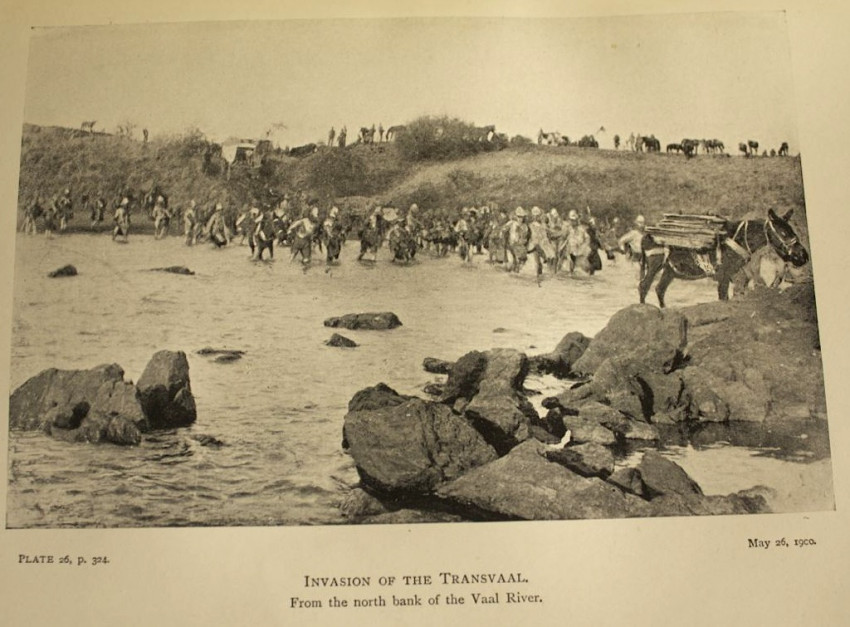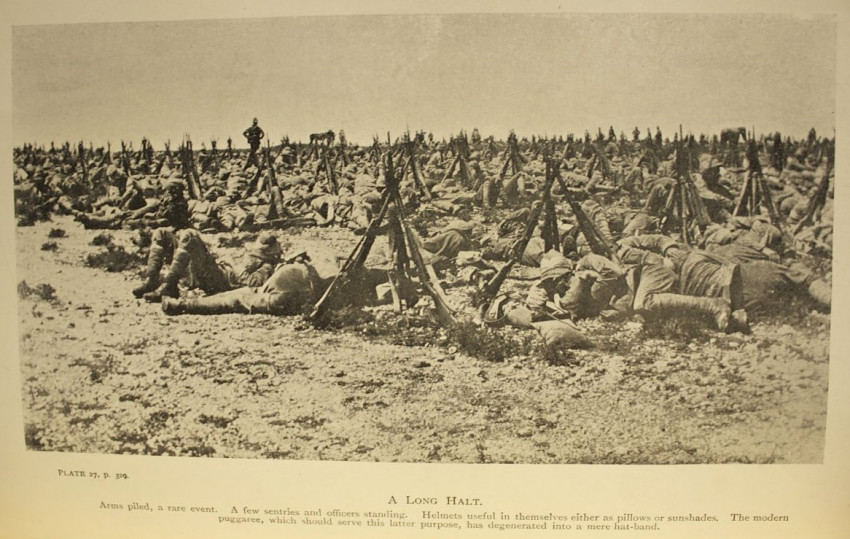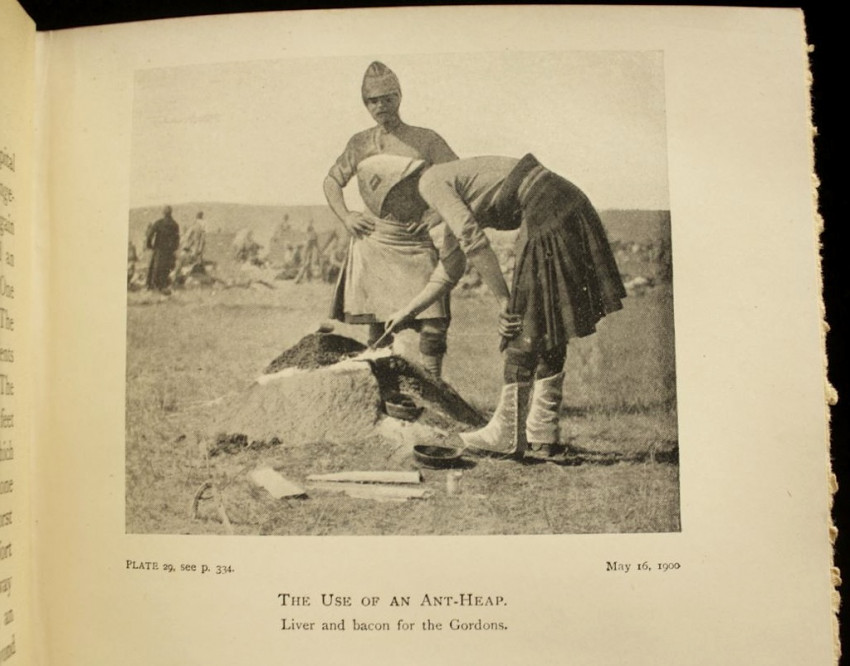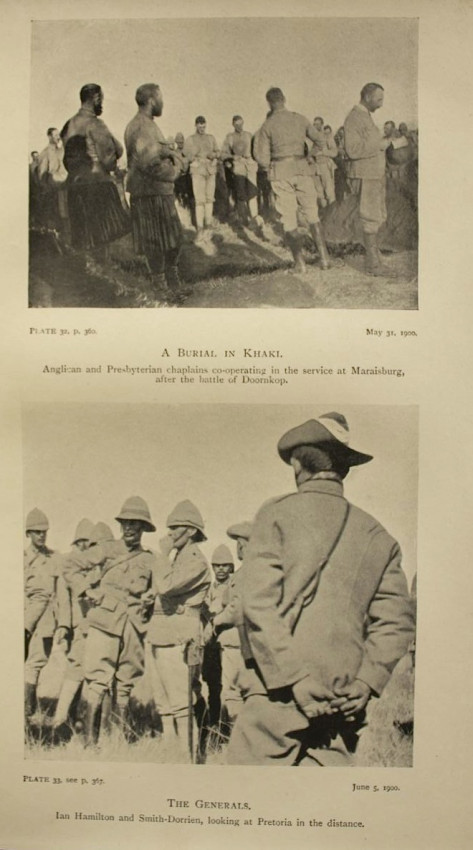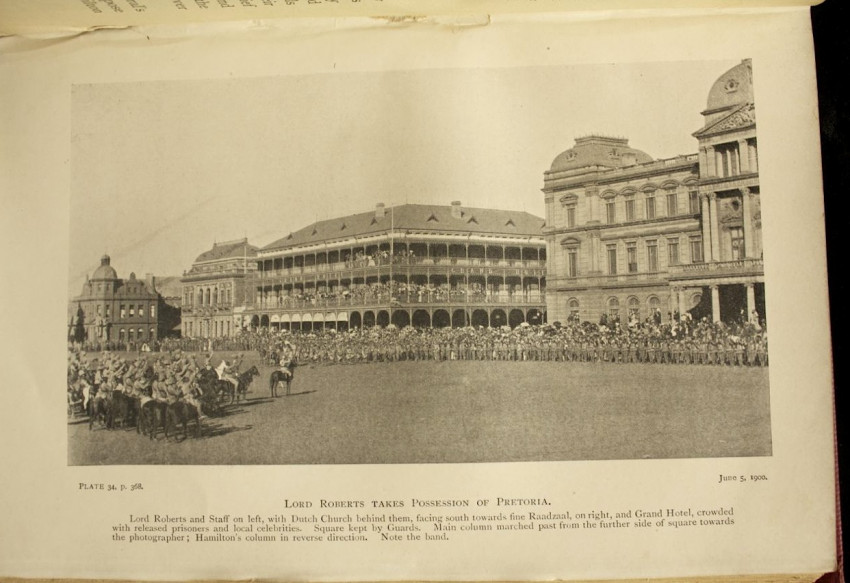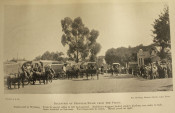Publisher's red cloth binding with pictorial front panel on khaki cloth background depicting a Hospital Directing Flag (in the field of action the red pointer indicates the direction of the field hospital).
xvi + 549pp. All plates and maps present. Binding tight, contents clean, rear hinge crack.
'The author, who sailed for Africa in October 1899, states that no public announcement was made to the effect that civil surgeons were required for the war, the authorities trusting simply to chance applications. His first post was at No. 1 General Hospital at Wynberg, and in a short time this hospital was very busy with an enormous crowd of wounded soldiers from Methuen's campaign. The writer seems to have been at variance with some of the superior officers of the Royal Army Medical Corps, and believed that an order which came for him to leave for England by the hospital ship Avoca had some connection with some articles criticising the bad nursing system which he had sent to Guy's Hospital Gazette and which were afterwards reproduced in the Daily Mail and other papers. He did duty on board the Avoca, and on his arrival in London had an interview with an official from the War Office, with the result that he was reinstated in the service, and on his re-arrival in Cape Town proceeded to Bloemfontein and took part in the forward march with Lord Roberts. Among the many celebrated men Mr. Fremantle met was Mr. Makins, the renowned surgeon, who told him he was convinced our troops had used some real Dum Dum bullets (Mark IV. or V.), although the officers deny the possibility of it. It is remarked that the Geneva Convention is very little understood by combatant officers, and it is asserted that Lord Kitchener unconsciously once tacked his carriage to a hospital train; under such circumstances, says Dr. Fremantle, "what wonder that the Boers fired on the Red Cross." ' - Mendelssohn Vol. I, pages 565-566
Bookplate of former owner William de Wiveleslie Abney (1843-1920) who was an English astronomer, chemist and photographer. He was born at Derby on July 24, 1843 and was the eldest son of Canon Abney, Vicar of St. Alkmunds, Derby, and of Measham Hall, Leicestershire. From an early age he exhibited an interest in photography which in turn led him to chemistry. His knowledge of chemistry enabled him to invent useful new techniques in photography, some of which found great application for photographing the infrared solar spectrum. His books on photography were considered standard texts at the time. He was elected a Fellow of the Royal Society in 1876.
- Binding Condition: Good
- Overall Condition: Good
- Size: 8vo.
- Sold By: Rare Paper
- Contact Person: Armandt Marais
- Country: South Africa
- Email: [email protected]
- Telephone: 0741235861
- Preferred Payment Methods: EFT, Bank Deposit. For International Customers: Paypal with 6% surcharge, International Transfer
- Trade Associations: A. A. Approved



